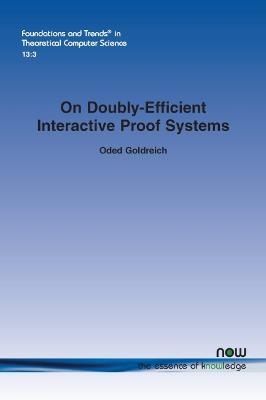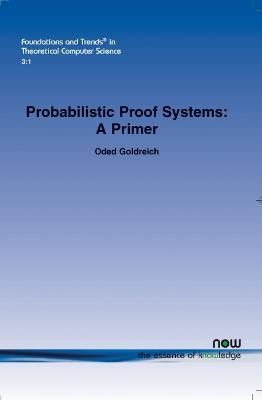Foundations and Trends (R) in Theoretical Computer Science
3 total works
Cryptography is concerned with the conceptualization, definition and construction of computing systems that address security concerns. The design of cryptographic systems must be based on firm foundations. Foundations of Cryptography presents a rigorous and systematic treatment of foundational issues, defining cryptographic tasks and solving cryptographic problems. The emphasis is on the clarification of fundamental concepts and on demonstrating the feasibility of solving several central cryptographic problems, as opposed to describing ad-hoc approaches. This second volume contains a thorough treatment of three basic applications: Encryption, Signatures, and General Cryptographic Protocols. It builds on the previous volume, which provided a treatment of one-way functions, pseudorandomness, and zero-knowledge proofs. It is suitable for use in a graduate course on cryptography and as a reference book for experts. The author assumes basic familiarity with the design and analysis of algorithms; some knowledge of complexity theory and probability is also useful.
An interactive proof system is called doubly-efficient if the prescribed prover strategy can be implemented in polynomial-time and the verifier’s strategy can be implemented in almost-linear time. Such proof systems make the benefits of interactive proof system available to real-life agents who are restricted to polynomial-time computation. This book surveys some of the known results regarding doubly-efficient interactive proof systems. It starts by presenting two simple constructions for t-no-CLIQUE, where the first construction offers the benefit of being generalized to any “locally characterizable” set, and the second construction offers the benefit of preserving the combinatorial flavor of the problem.
It then turns to two more general constructions of doubly-efficient interactive proof system: the proof system for sets having (uniform) bounded-depth circuits and the proof system for sets that are recognized in polynomial-time and small space. The presentation of the GKR construction is complete and is somewhat different from the original presentation. A brief overview is provided for the RRR construction.
It then turns to two more general constructions of doubly-efficient interactive proof system: the proof system for sets having (uniform) bounded-depth circuits and the proof system for sets that are recognized in polynomial-time and small space. The presentation of the GKR construction is complete and is somewhat different from the original presentation. A brief overview is provided for the RRR construction.
Various types of probabilistic proof systems have played a central role in the development of computer science in the last couple of decades. These proof systems deviate from the traditional concept of a proof by introducing randomization and interaction into the verification process. Probabilistic proof systems carry an error probability (which is explicitly bounded and can be decreased by repetitions), but they offer various advantages over deterministic proof systems.
This primer concentrates on three types of probabilistic proof systems: interactive proofs, zero-knowledge proofs, and probabilistically checkable proofs (PCP). Surveying the basic results regarding these proof systems, the primer stresses the essential role of randomness in each of them.
This primer concentrates on three types of probabilistic proof systems: interactive proofs, zero-knowledge proofs, and probabilistically checkable proofs (PCP). Surveying the basic results regarding these proof systems, the primer stresses the essential role of randomness in each of them.


